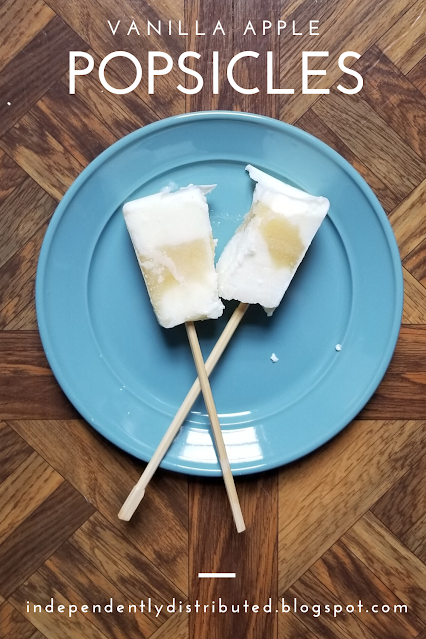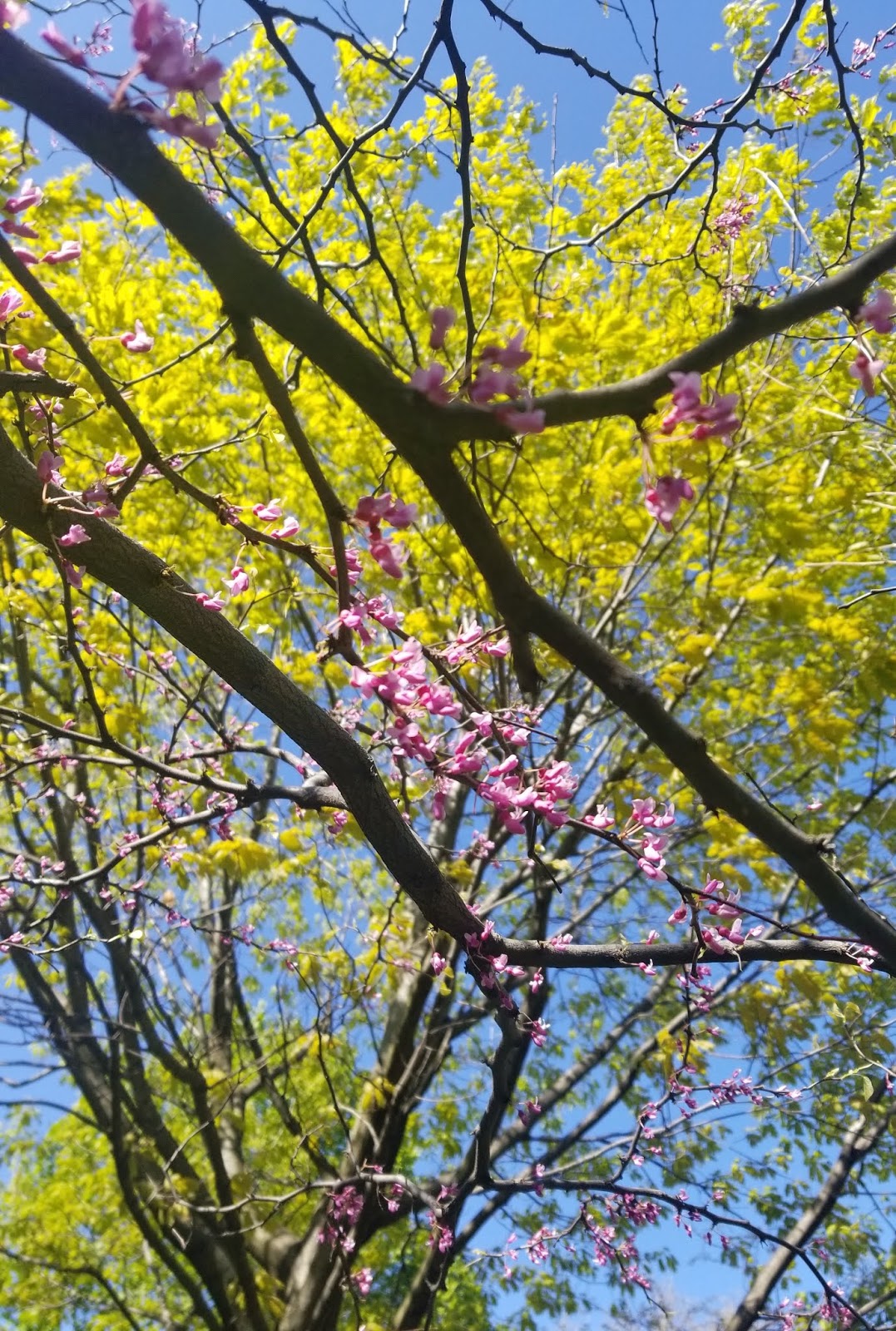Avocados yield a beautiful pink dye. Surprising? Specifically, the dye comes from the pits and skins (so you get to eat all the yummy bits, yay!)
The internet has several "recipes" or posts about avocado dye, but the instructions and results are highly variable. Success and color seems to depend on pH, type of avocado, extraction method/time, fiber, and ?? magic ?? (for the links that I found useful, see bottom of article). This experimental series is designed to see if I can reliably extract pink dye from avocados on different natural fibers.
For this experiment, I made dye from the pits and skins of 11 avocados. I scrubbed off the residual bits of avocado flesh, chopped the pits into eighths, and froze everything in a big ziplock bag until I had enough (maybe 2-3 weeks). [Note: you don't need 11 avocados. As I found out, 11 is wayyyyy overkill. Probably just 4-5 avocados would have been more than enough for my half pound of wool.]
As always, I used whatever base yarns that I had at home.
- Full skein (227g/8oz) of Lion Brand Fisherman's Wool (100% wool) - base color: natural
- 4 ties (minimal weight) around the skein of Lion Brand Wool-Ease (20% wool, 80% acrylic) - note: the acrylic content should not dye, so the final color
should be lighter than pure wool - base color: fisherman
- 2 ties (minimal weight) around the skein of Red Heart Classic 10 Crochet Thread (100% mercerized cotton) - base color: natural
Materials Needed
- Avocado pits and skins
- Wool and/or cotton yarn
- Dye pot large enough for yarn to move around freely
- Scouring agent or dish soap
- Baking soda or washing soda (latter preferred)
- Dye pot or two (not used for food)
Methods
I scoured everything per my standard procedure detailed
here, leaving the yarn in a bucket of water because I was planning to dye soon. I didn't use any mordants for this experiment because avocado dye isn't supposed to require mordant - avocados have naturally high tannin content, which acts as the mordant. (I do plan to try alum and possibly black walnut tannin in future experiments.)
Extract Dye
I wanted to see if the skins and pits gave different colors. So, I put chopped up avocado skins in one pot and chopped up pits in the other. I
read that you're not supposed to boil the dye because that can brown it, so I alternated heating for 5-10 minutes (watching to make sure the pots didn't get past simmering) and letting the pots sit, covered, for 30-60 minutes on the stove with the heat off. I did this for 3 cycles of heating/waiting, then left it alone to sit overnight. Throughout the next day I did 6 more heat/wait cycles. (Total dye extraction time = 25 hours).
During this process, I kept an eye on the color of the dyebaths. I don't have litmus paper to test pH, so I just relied on my eyes. If things didn't look pink or at least red/orange, I added some baking soda to raise the pH of the dyebath (make it more alkaline). In hindsight, I should have measured the baking soda amount... sorry, will do that next time. My rough guess: about 1/8 cup of baking soda per pot. As you can kind of see from the before-and-after pics below, the dyebaths were kind of murky yellow before baking soda but got much more red/pink as the pH increased. The dyebaths got more concentrated as time passed, but the color change was really from the baking soda.
Dye
I scooped out as many of the avocado pit and skin chunks as I could (and saved them in a plastic bag and froze them, in case I wanted to use them again). Then I draped my yarn across the two pots, with one end of the skein in the avocado skins dyebath and the other end in the avocado pits dyebath. I did about 8 heat/wait cycles throughout the day.
The pot edges were kind of high so the middle didn't get much dye, and the dye didn't really wick up the yarn to cover the dry spot. I tried to rotate the yarn slightly throughout the dye process and pour some of the dye over the middle section so that it got at least a little dye.
As always, I was hoping for as vibrant of a color as possible, so I left the yarn in the dyebath for the rest of the day and overnight (about 24 hours total).
The next morning, I took the yarn out and let it dry fully BEFORE rinsing.
Results
After letting the yarn dry for 2 days, I rinsed in cold water until the water ran clear. Here are pictures of the yarn before and after rising. The rinsewater from the first few rinses was super dark, almost the color of the dyebath (which makes sense, I guess).
On the 100% wool, the avocado skin dye came out a bit pinker, and the avocado pits created a somewhat browner pink. Here is the stretched-out wool skein after fully drying - skin-dyed side on the left, pit-dyed side on the right.
The wool blend (20% wool, 80% acrylic) came out a nice blush color, lighter than the pure wool (as expected). I didn't notice much of a difference between skins and pits, probably because such a small fraction of the yarn dyed.
The cotton thread was fairly different between skins and pits, with the pits giving a softer light pink color (middle of picture below) and the skins dying a much darker, almost orange-tinged pink (right). Undyed cotton thread is at the left for reference.
Conclusions and Future Directions
I'm really happy with how this experiment turned out! The colors are beautiful on all fibers and especially vivid on the wool.
11 avocados gave WAY more dye than I needed for 8oz of wool. The dyebath was roughly the same color when I poured it out as when I started steeping the yarn. I probably could have dyed at least twice as much fiber to the same color (but unfortunately I needed my stove back for cooking actual food and didn't have time for more).
My next step with avocado dye is to do a second extraction from the saved pits and skins (together) from this experiment. I scooped out most of the solid content but there were definitely some left when I poured out the dyebath, so I'm guessing I have around 9 avocados worth for the second extraction. I'll use this to dye a full 1000yd cone of crochet thread (100% mercerized cotton) because I'm designing a tank top that would look lovely with some of this gorgeous pink.
Useful Links About Avocado Dye - Sites with info that I found helpful. I haven't experimented enough to personally verify all their information, but I've tried some of their tips or think they make sense/are worth a try.
https://rebeccadesnos.com/blogs/journal/avocado-dye-faqs-top-tips-for-pink
http://www.allnaturaldyeing.com/dyeing-with-avocados/








































